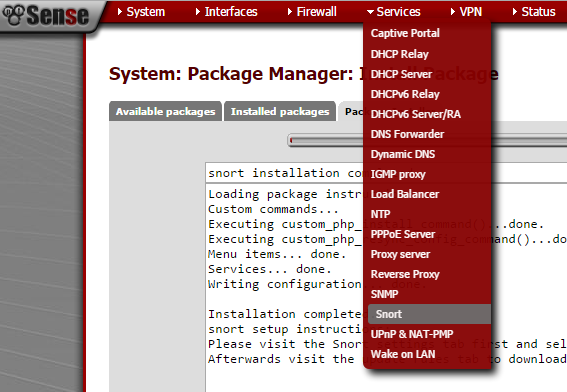How To Install Snort On Pfsense Tutorial

Installer ISO, Memstick or Memstick Serial? If a Full Install is to be performed, there are three types of install media that can be used to accomplish the task: • Optical disc image (ISO image, CD/DVD disc): Easy and familiar to many, if the target hardware has an optical drive it’s a solid choice, especially if the BIOS will not boot from USB. • Memstick: Like the CD/DVD, but run from a USB thumb drive. Often faster than the CD/DVD. Many new devices do not have integrated optical drives, making this the current best recommendation.
Download App Freezer (NoRoot) apk 1.7 and all version history for Android. Completely Freeze/stop/hibernate apps with 1 click! Using APKPure App to upgrade App Freezer (NoRoot), fast, free and save your internet data. From larder to integrated freezers, LG's sleek fridge freezers offer digital controls, precise settings, and maximum capacity while taking up minimum space. Microwave Ovens Air Purifiers Heating System. Support Downloads. 
Jan 22, 2018 - 7 Business Questions About Starting / Running my IT Company August 2018 Google Fi Review: Still Using Project Fi 3 Years Later and They.
• Serial Memstick: Like the Memstick image, but runs using the serial console rather than VGA, for newer embedded systems. Performing a Full Install (ISO, Memstick) Power on the target system and connect the install media: Place the CD into the drive or plug the Memstick into a USB port. If the BIOS is set to boot from CD/USB, pfSense will start. For other boot issues,.
As the operating system boots and pfSense starts, a wizard will start and prompt to accept the copyright and distribution notice. To start the installation select OK while Install option is selected. Next step is to select filesystem. By default UFS is selected. ZFS support is currently experimental. Select OK to continue. This option automatically configures the hard drive.
The following step allows Keymap Selection. Standard US is default. Continue to the next step with Select. The install will proceed, wiping the target disk and installing pfSense. Copying files may take some time to finish. It usually takes no longer than a couple of minutes.
After installation completion manual configuration options are offered, select No to continue. Now the system must reboot so that pfSense may start from the target disk. Select Reboot and then press Enter. Be sure to remove the disc or USB memstick so that the system will not attempt to boot from there next time. After the system reboots, pfSense will be running from the target disk.
The next step is to Assign Interfaces on the Console below. Assign Interfaces on the Console The default configuration file on pfSense 2.3 has em0 assigned as WAN, and em1 assigned as LAN. If the target hardware has em0 and em1, then the assignment prompt is skipped and the install will proceed as usual. Several other common platforms such as our SG systems, APU, and ALIX are also recognized and will have their interfaces assigned in the expected order. If the hardware platform cannot be identified, a list of network interfaces and their MAC addresses that were located on the system will appear, along with an indication of their link state if that is supported by the network card. The link state is denoted by “(up)” appearing after the MAC address if a link is detected on that interface.
The MAC (Media Access Control) address of a network card is a unique identifier assigned to each card, and no two network cards should have the same MAC address. After that, a prompt will be shown for VLAN configuration. LAN, WAN, OPTx The first interface prompt is for the WAN interface. If the interface is known, enter its name, such as igb0 or em0 and press Enter. If the identity of the card is not known, see the next section for the Auto Assign Procedure.
The second interface prompt is for the LAN interface. Enter the appropriate interface, such as igb1 or em1, and press Enter again.
If only the WAN interface is to be used, and no LAN, press Enter without giving any other input. Only one interface (WAN) is required to setup pfSense. If more interfaces are available they may be assigned as LAN and OPTx interfaces.

The procedure is the same for additional interfaces: Enter the appropriate interface name, then press Enter. When there are no more interfaces to add, press Enter.
The list of assigned interfaces is displayed. If the mappings are correct, enter y, otherwise enter n and repeat the assignment. Auto Assign Procedure For automatic interface assignment, first unplug all network cables from the system, then type a and press Enter. Now plug a network cable into the interface that should connect to the WAN, and press Enter. If all went well, pfSense should know now which interface to use for the WAN.